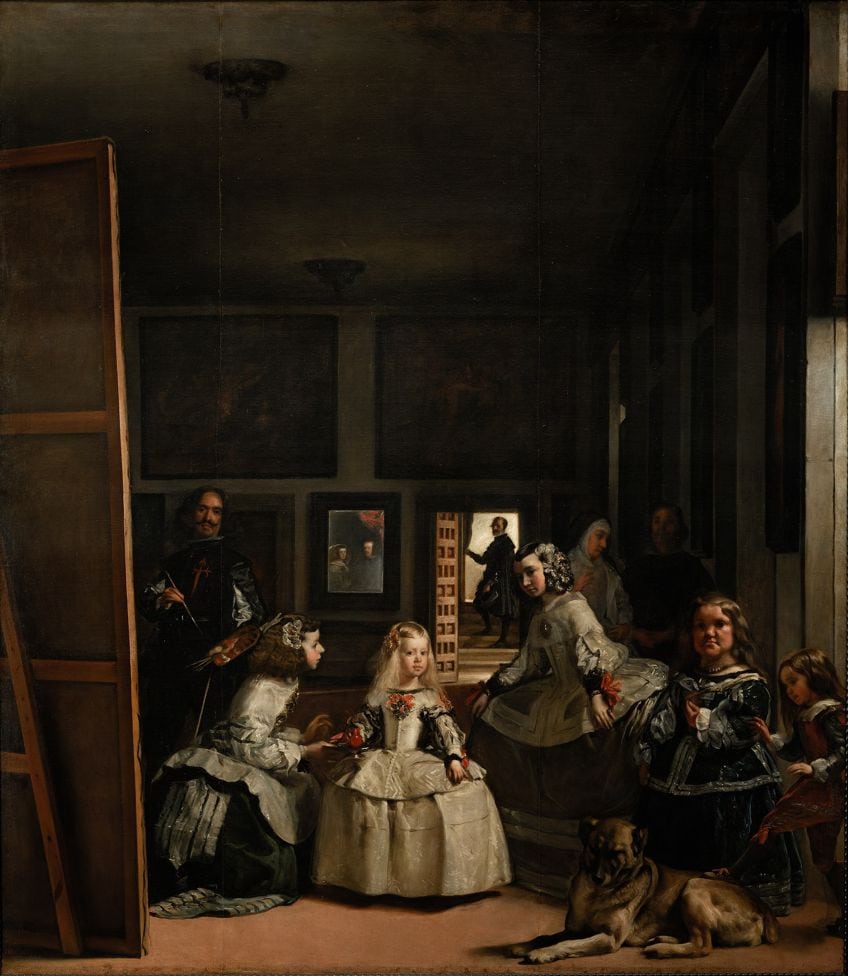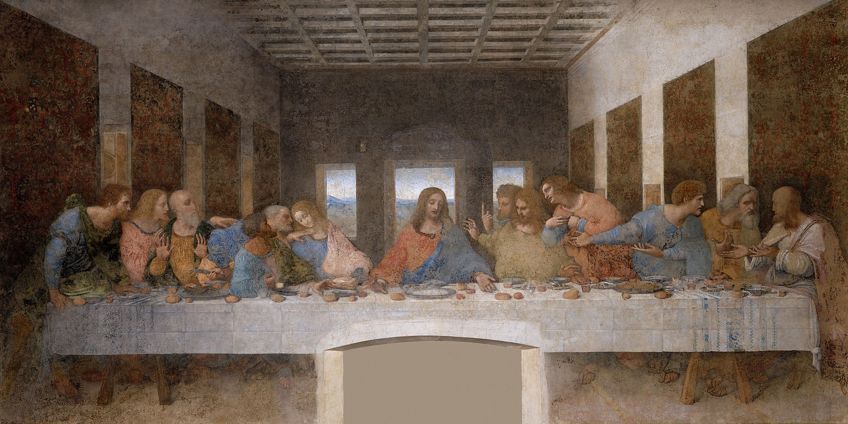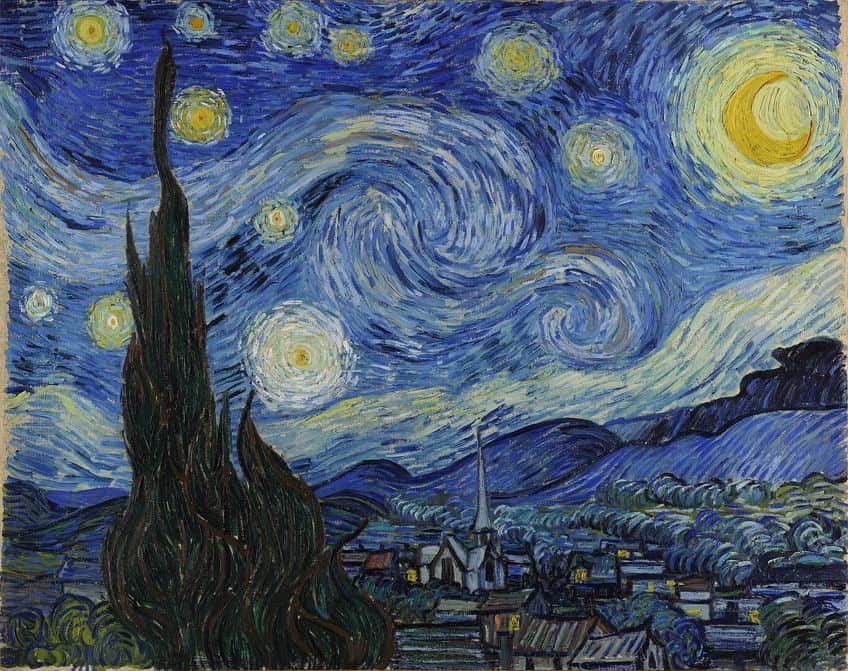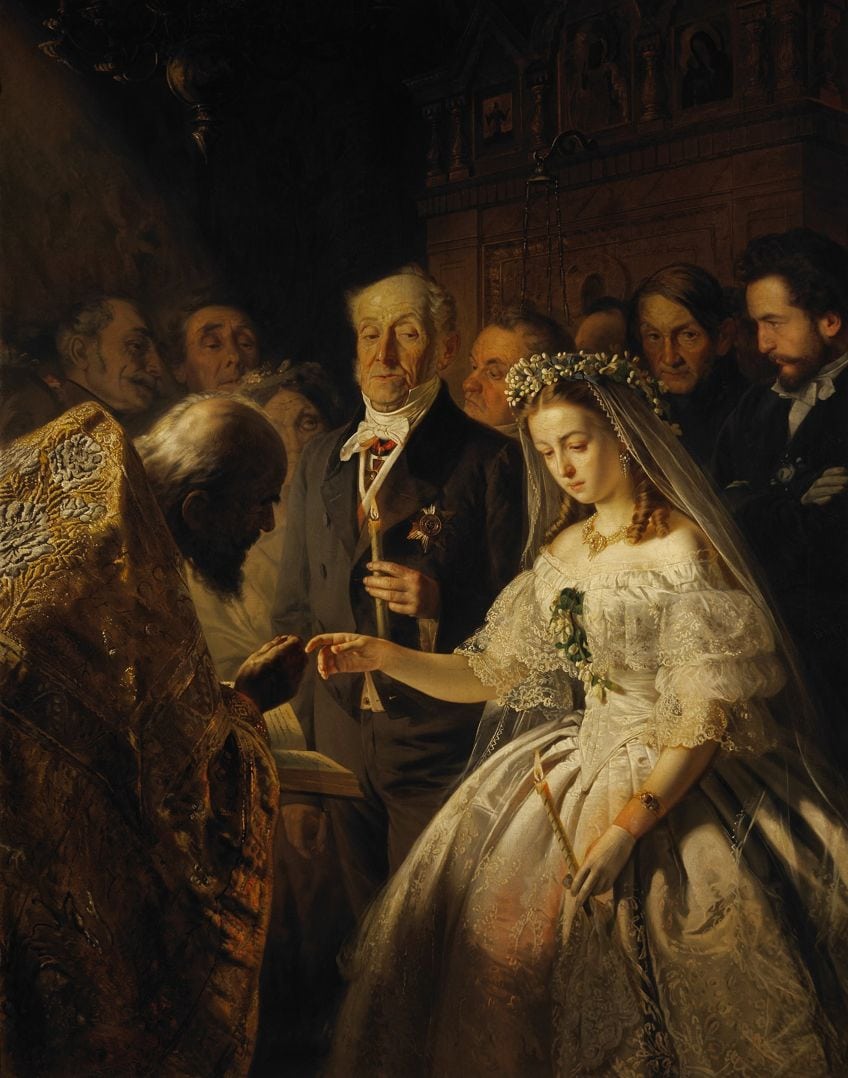Implied Lines in Art – A Key Element of Cohesive Composition
Implied lines in art refer to suggested or perceived lines that are not explicitly drawn but are created through the arrangement of shapes, forms, and visual elements within a composition. These lines play a crucial role in guiding the viewer’s eye and creating a sense of movement, direction, and connectivity within the artwork. Implied lines can be found in various art forms, including paintings, drawings, sculptures, and even in photography. Understanding how implied lines work allows artists to enhance the dynamic and expressive qualities of their creations, leading to more engaging and impactful visual experiences for the audience.
Key Takeaways
- Implied lines are used by artists to guide the viewer’s focus and to add dynamic structure without being physically drawn.
- These lines are created through visual cues and require viewer engagement to be mentally constructed.
- Strategic use of implied lines influences the narrative and emotional tone in a composition.
What Are Implied Lines?
Implied lines in art are a powerful tool that artists use to direct the viewer’s attention, create structure, and convey movement and emotion within a composition—even though these lines are not physically drawn. Unlike explicit lines that are tangible and visible, implied lines are suggested through alignment of various visual elements such as colors, shapes, and textures. These invisible lines are formed in the viewer’s mind and can often elicit a stronger response than actual lines as they require active engagement and imagination to complete the picture.

Understanding how to use implied lines is essential for artists seeking to add a dynamic quality to their work. By arranging components in a specific way, an artist can manipulate the focus and the flow of an artwork in subtle yet impactful ways. Just as the syntax of a sentence affects the meaning of text, the strategic use of implied lines contributes to the overall narrative and emotional tone of visual art. Whether through the direction a figure is looking, the way light casts shadows, or the continuation of a pattern, these unseen guides are integral to the composition and storytelling of an artwork.
Difference Between Actual and Implied Lines
Actual lines are tangible or visibly inked, drawn, or etched onto a surface, forming the definite shapes and contours we plainly perceive. These lines are explicit — seen directly by the eye. Implied lines, in contrast, are not physically presented in an artwork. Instead, they are suggested through a series of points or visual cues such as color, texture, value change, and the spatial relationship between objects. An artist might arrange elements so that the viewer’s eye naturally follows a path along these cues, forming a ‘line’ where none is drawn.
This technique is critical in creating dynamic compositions, suggesting movement, and conveying depth.
Understanding Implied Lines in Art
Implied lines in art refer to the invisible lines that guide an observer’s eye through a composition. Unlike actual lines, which are physically present, implied lines are suggested through various visual cues such as alignment of shapes, direction of figures, or continuation of edges.

Defining elements in the realm of line art encompass both the tangible and the suggestive. An actual line is characterized by its tangible presence—a visible, continuous mark that defines boundaries and shapes within an artwork. On the other hand, an implied line transcends physicality, existing as a non-physical entity that suggests a visual connection without a literal presence. These contrasting elements, while distinct, work in tandem to enrich the language of art, offering artists a range of tools to express concepts, guide perceptions, and evoke emotions within their compositions.
Characteristics of Implied Lines
Characteristics of implied lines include their subtle nature, as they are suggested rather than directly drawn, and their ability to create a sense of movement and flow within an artwork.
These lines often emerge from the arrangement of shapes, forms, and negative spaces, adding depth and dynamism to the overall composition.
- Implied lines often dictate the flow of a composition.
- They can create a sense of movement or stasis.
- These lines may emerge through contours, where changes in color, texture, or value imply their presence.
- They can serve as leading lines, which direct the viewer’s gaze to a focal point.
- Implied lines can be used to establish perspectives or spatial relationships within the artwork.
Uses in Art
Implied lines in art are used to guide the viewer’s eye through a composition, creating a visual pathway that enhances the narrative and aesthetic impact of the artwork. Additionally, they can suggest movement, direction, and connections between elements, adding layers of complexity and visual interest to the piece.

- Establishing structure: Implied lines offer structure by delineating boundaries between color and texture.
- Directing viewers’ attention: These lines control the flow of the observer’s gaze inside the artwork.
- Conveying movement: Through implied lines, artists can create a dynamic that suggests motion.
- Adding depth: By arranging elements with alignment in mind, artists enhance the three-dimensional quality of an image.
In practice, artists utilize implied lines to strengthen their compositions, seamlessly weaving a story for the eye to follow, whether it be on a tranquil landscape or amidst the tumult of an abstract piece.
They are fundamental tools that artists use to communicate visual narratives subtly and effectively.
Elements and Principles of Design
The interplay of elements and principles of design provides the foundation for visual art, dictating how different components work together to create a cohesive and engaging piece.

Role of Line and Shape
Lines, both actual and implied, define boundaries between planes, create textures, and suggest movement. Shapes, formed by the enclosure of these lines, are essential elements of art.
They contribute to the balance and harmony of a design.
Influence of Light and Shadow
Light and shadow play crucial roles in constructing a composition’s tone and atmosphere. Utilizing contrast effectively can bring a sense of volume to form and space within the artwork.

Composition and Structure
The arrangement of elements of art within a space—composition—along with the underlying order or layout—structure—determine the visual path that the viewer’s eye will follow.
This organization of space can create a sense of unity or variety within the work.
Depicting Movement and Direction
Art can convey a sense of movement or direction through dynamic elements such as diagonals, leading lines, or repeated shapes that guide the viewer’s eye through the composition.

Creating Depth and Volume
Depth and volume are depicted through a variety of techniques, such as overlapping shapes, changes in size and detail, perspective, and shading.
These techniques give a three-dimensional quality to two-dimensional work.
Symbolic and Emotional Meaning
Artists may use symbols or strategically employ elements and principles of design to evoke an emotional response. For example, color and texture can communicate deeper meanings beyond the literal representation.

Narrative and Storytelling
Through visual cues such as figure placement, directional lines, and the interplay between foreground and background, artists can weave narrative elements.
This effectively tells a story within a single frame.
Techniques in Different Art Mediums
Implied lines have a unique function across various art mediums by guiding the viewer’s gaze and enhancing the composition. They can be suggested through edge-to-edge alignment, color gradients, and directionality of elements within a composition.

Drawing and Sketching
In drawing and sketching, artists often use pencil or charcoal to create implied lines by strategically placing marks on their paper. Techniques such as hatching and cross-hatching can imply form and volume, directing the viewer’s eye across the page. Contour drawing emphasizes the edges of shapes and can suggest an implied line where two contours converge, without actually drawing the connecting line.
Another technique, cross-contour, helps imply the three-dimensional form of the subject using curving lines that suggest movement and volume.
Painting and Illustration
Painting and illustration mediums, such as watercolors, acrylics, and oils, offer richer applications of color and brushwork that can create implied lines. Techniques can range from subtle color transitions in watercolor that hint at a line, to bold brush strokes in acrylic or oil painting that lead the eye in a specific direction. Artists consider color theory to merge or separate elements on a canvas, further implying lines that aren’t explicitly drawn. In essence, the flow of the brush and juxtaposition of hues can be expertly used to suggest movement and boundaries.

Photography and Digital Art
In photography, implied lines manifest through photo composition such as the arrangement of subjects, the interplay of light and shadow, and the use of framing and crop to suggest a path for the viewer’s eye. Techniques for enhancing implied lines in digital art include image editing tools that play with contrast and color to create virtual lines.
These lines can be strengthened or softened in post-processing, leading to an image that either subtly or overtly directs the viewer’s focus through the piece.
Historical and Cultural Examination
Implied lines in art hold significant relevance through various periods, reflecting the evolution of artistic styles and the cultural impact of the art movements.

The Evolution of Line Usage in Art
Art history demonstrates a rich evolution in the use of line, from the explicit contours of ancient Egyptian hieroglyphics to the subtle implied lines in modern art. In the Renaissance period, Leonardo da Vinci’s works, like The Last Supper, meticulously employed sight lines to direct viewer attention and narrative flow. Implied lines also served to articulate the depth and perspective, a technique further refined during the Baroque era by artists like Diego Velázquez, who manipulated lines to enhance the three-dimensionality of space.
Moving into the 19th century, the loose brushwork of Impressionist artists like Claude Monet transitioned away from rigid linearity toward a more organic use of lines to convey light and motion.
Iconic Artworks and Artists
Implied lines have been pivotal in the works of numerous masters of the craft, significantly contributing to their cultural significance. For instance, Starry Night by Vincent van Gogh features swirling, animated lines that guide viewers through the emotional landscape of the painting. Edvard Munch’s The Scream uses curvilinear implied lines to evoke a sense of anxiety and turmoil. Grant Wood employed implied lines in American Gothic to draw attention to the characters’ expressions, capturing a rigid moralistic era. In each case, these artists’ manipulation of line demonstrates their mastery over the viewer’s eye movement and narrative within their compositions.

The works of Marc Chagall, with his whimsical floating figures, show how implied lines can defy gravity, blending the real with the fantastical and challenging viewers’ perceptions of space. Similarly, Vasily Pukirev’s The Unequal Marriage positions the viewers’ eyes to critique societal norms. Each artist’s unique approach to implied lines has cemented their works as influential artworks within their respective historical contexts and styles.
Implied lines are a powerful tool in an artist’s repertoire, enabling them to create dynamic compositions that engage viewers and convey a sense of movement and connectivity. By understanding how implied lines work and incorporating them thoughtfully into their artworks, artists can enhance the visual impact and narrative depth of their creations. Whether subtly guiding the viewer’s gaze or suggesting unseen connections between elements, implied lines add a layer of complexity and intrigue to art, enriching the overall experience for both the artist and the audience.
Frequently Asked Questions
How Do Artists Utilize Implied Lines to Suggest Movement in Their Works?
Artists employ implied lines by positioning elements such as shapes, colors, and textures in a manner that directs the viewer’s eye along a path, imitating motion. They might arrange figures or objects that appear to point in a certain direction, or their gestures may visually propel the eye along a trajectory that suggests movement.
In Which Ways Can Implied Lines Be Identified in Works of Art?
Implied lines can be identified by the visual connections between disparate elements, like the alignment of objects, gaze direction of figures, or the continuation of a color or pattern that leads the eye through the composition. They are not physically drawn lines but rather the invisible paths that guide the viewer’s gaze and connect compositional elements.
How Do Implied Lines Contribute to the Perception of Form and Space in a Composition?
Implied lines contribute to the perception of form by outlining shapes or edges where no definite line exists, allowing the viewer’s imagination to complete the form. They also influence the perception of space by creating depth and dimensionality, often suggesting continuation of form beyond the boundaries of the artwork, which enhances the spatial dynamics within the piece.
Isabella studied at the University of Cape Town in South Africa and graduated with a Bachelor of Arts majoring in English Literature & Language and Psychology. Throughout her undergraduate years, she took Art History as an additional subject and absolutely loved it. Building on from her art history knowledge that began in high school, art has always been a particular area of fascination for her. From learning about artworks previously unknown to her, or sharpening her existing understanding of specific works, the ability to continue learning within this interesting sphere excites her greatly.
Her focal points of interest in art history encompass profiling specific artists and art movements, as it is these areas where she is able to really dig deep into the rich narrative of the art world. Additionally, she particularly enjoys exploring the different artistic styles of the 20th century, as well as the important impact that female artists have had on the development of art history.
Learn more about Isabella Meyer and the Art in Context Team.
Cite this Article
Isabella, Meyer, “Implied Lines in Art – A Key Element of Cohesive Composition.” Art in Context. March 20, 2024. URL: https://artincontext.org/implied-lines-in-art/
Meyer, I. (2024, 20 March). Implied Lines in Art – A Key Element of Cohesive Composition. Art in Context. https://artincontext.org/implied-lines-in-art/
Meyer, Isabella. “Implied Lines in Art – A Key Element of Cohesive Composition.” Art in Context, March 20, 2024. https://artincontext.org/implied-lines-in-art/.









